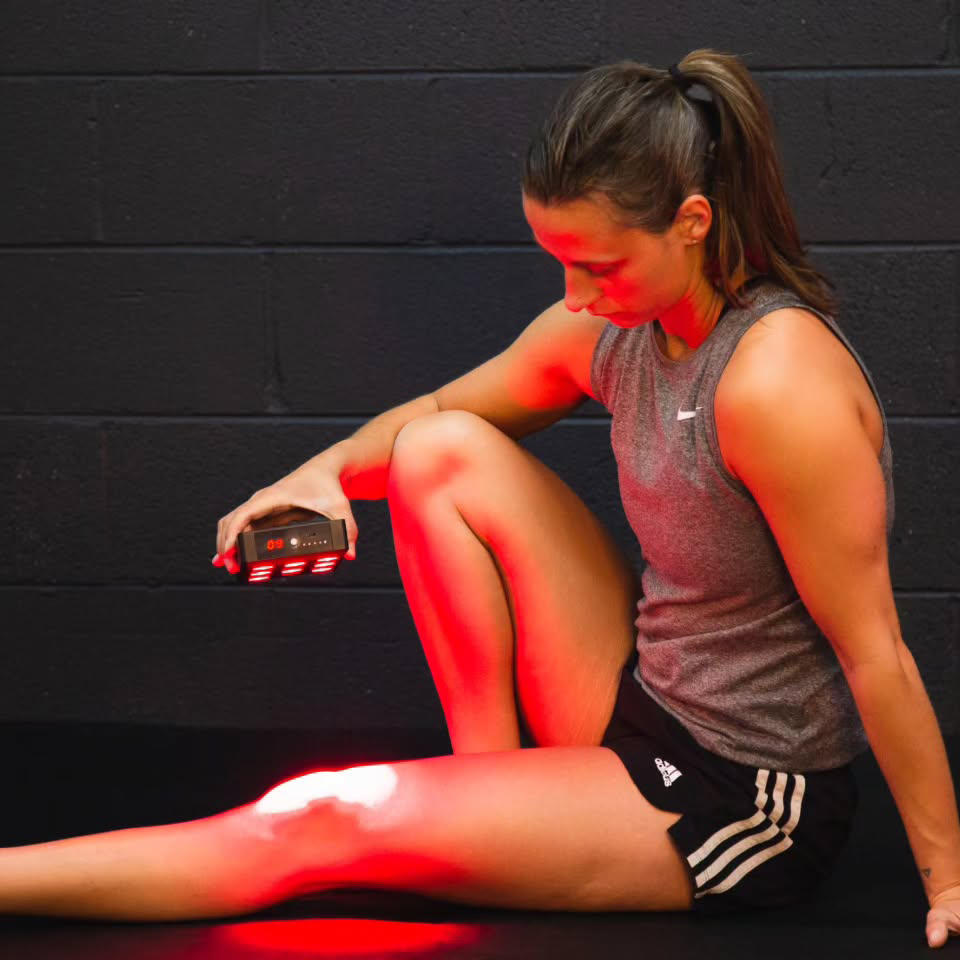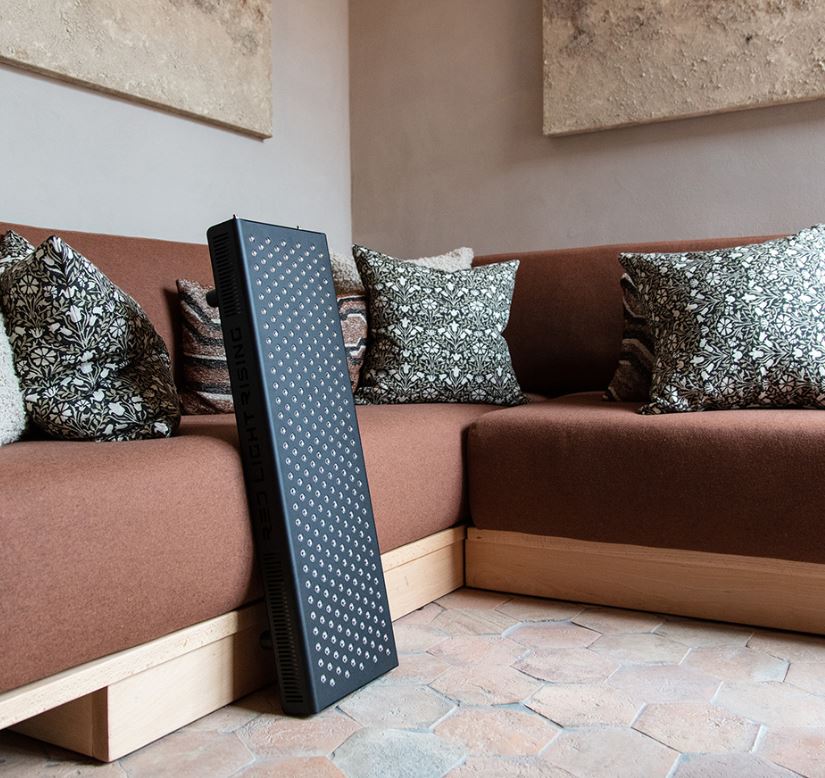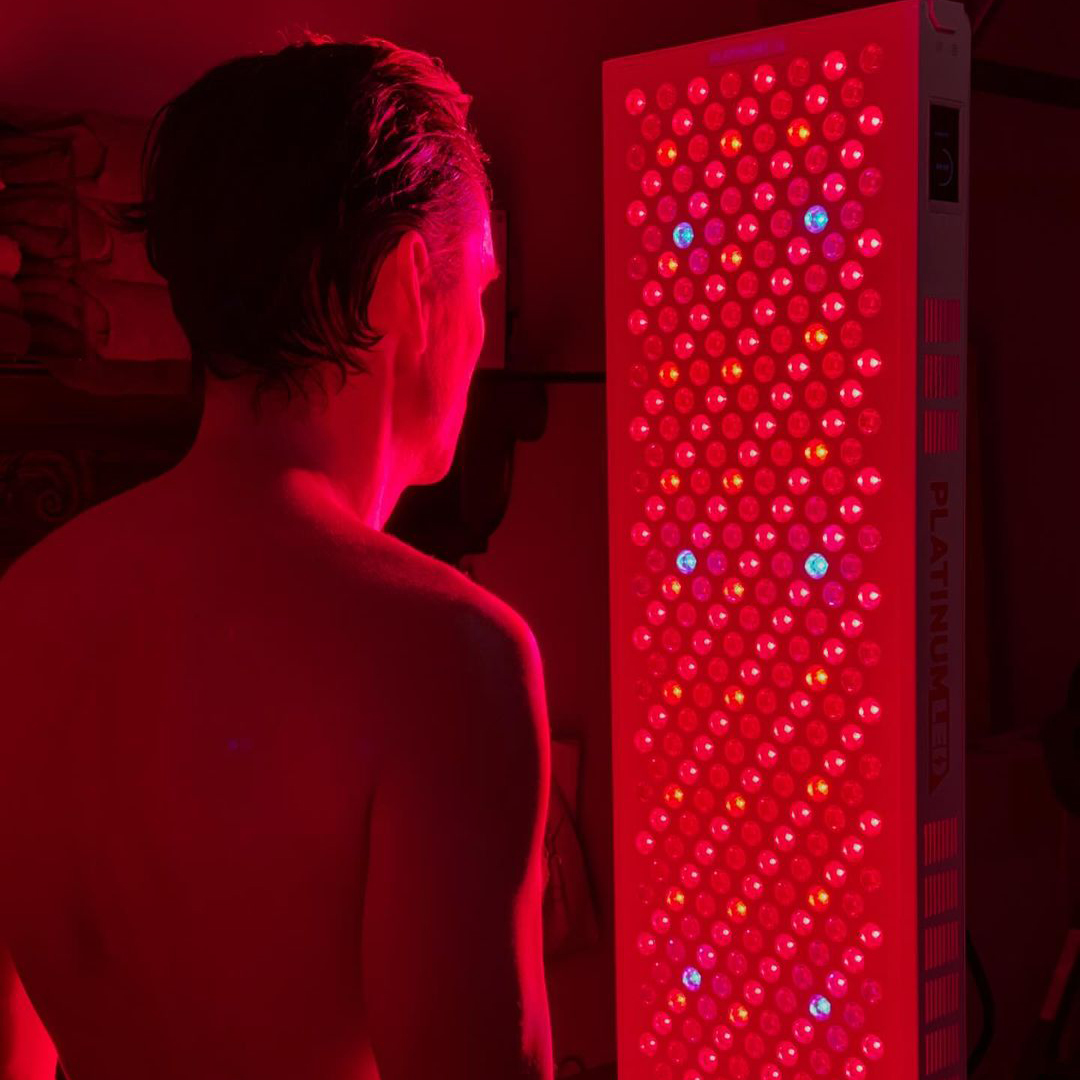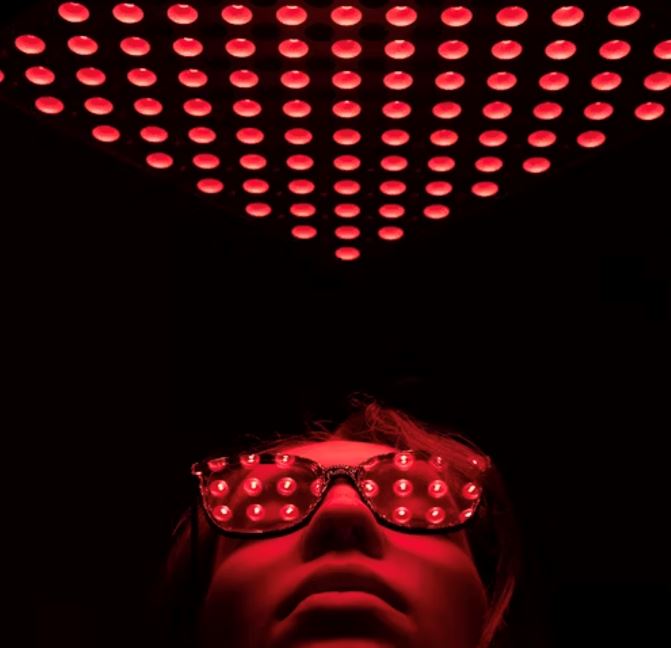![]() Free Shipping
Free Shipping ![]() Buy Now, Pay Later
Buy Now, Pay Later ![]() Eligible
Eligible
Red Light Therapy for Argyria: A Promising Treatment for Skin Discoloration
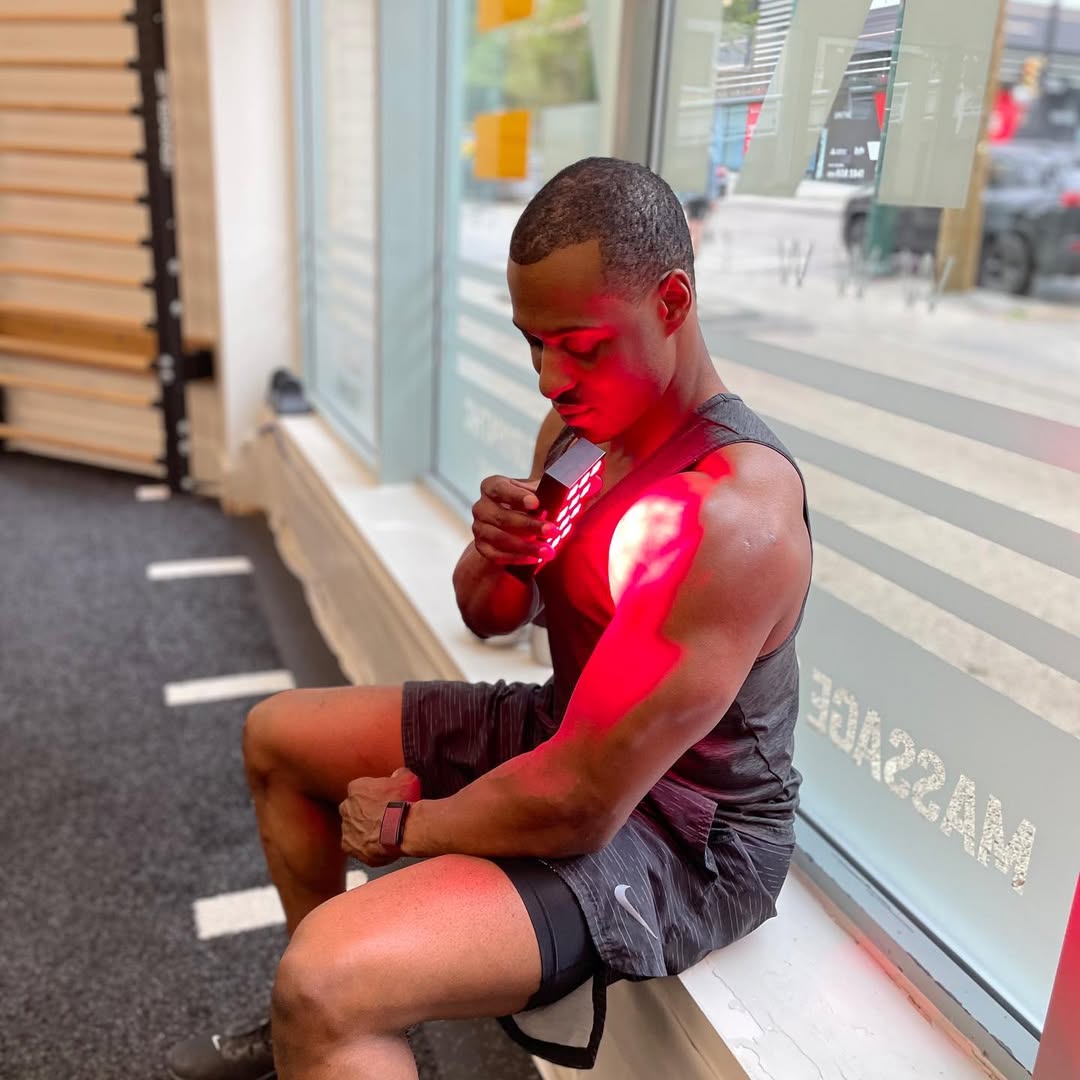
Introduction
Argyria is a rare but distressing condition characterized by blue or grayish skin discoloration caused by excessive exposure to silver compounds. Historically linked to silver ingestion—whether through medications, dietary supplements, or occupational exposure—argyria has no universally accepted cure. However, recent advancements in light-based therapies, particularly red light therapy (RLT), have shown promise in reducing skin discoloration and improving overall skin health.
This comprehensive article explores:
- What argyria is and how it develops
- The science behind red light therapy
- How RLT may help with argyria
- Clinical evidence and case studies
- Practical ways to use RLT for argyria
- Additional supportive treatments
By the end, you’ll have a clear understanding of whether red light therapy could be a viable option for managing argyria symptoms.
Understanding Argyria: Causes and Symptoms
What Is Argyria?
Argyria is a condition where silver particles accumulate in the skin, eyes, and mucous membranes, leading to blue-gray discoloration. The condition is typically permanent because silver deposits bind tightly to tissues and are difficult to remove.
How Does Argyria Develop?
Argyria occurs due to prolonged exposure to silver in forms such as:
- Colloidal silver supplements (consumed for supposed immune-boosting properties)
- Silver-containing medications (historically used in wound care)
- Occupational exposure (e.g., silver mining, jewelry making, photography)
Once ingested or absorbed, silver ions bind to proteins in the skin, forming silver sulfide or selenide complexes, which create the characteristic discoloration.
Symptoms of Argyria
- Blue or slate-gray skin, especially in sun-exposed areas
- Discoloration of nails and gums
- Eye involvement (in severe cases, the whites of the eyes may turn bluish)
- No systemic toxicity (argyria is mostly cosmetic, not life-threatening)
Since conventional treatments (e.g., laser therapy, chelation) have limited success, researchers are exploring red light therapy as a non-invasive alternative.
Red Light Therapy: The Science Behind It
What Is Red Light Therapy?
Red light therapy (RLT), also known as low-level laser therapy (LLLT) or photobiomodulation (PBM), uses specific wavelengths of red and near-infrared (NIR) light (typically 630-850 nm) to stimulate cellular repair.
VELLGUS Elite V2
THE #1 RATED RED LIGHT DEVICE
VELLGUS pro V2
THE #1 RATED FULL BODY RED LIGHT DEVICE
How Does RLT Work?
When red or NIR light penetrates the skin, it interacts with mitochondria (the energy powerhouses of cells), boosting adenosine triphosphate (ATP) production. This enhances cellular metabolism, leading to:
- Increased collagen production
- Reduced inflammation
- Improved blood circulation
- Enhanced tissue repair
Why Could RLT Help with Argyria?
While RLT doesn’t remove silver particles, it may help by:
- Breaking Down Silver Complexes
- Some studies suggest that certain light wavelengths can alter silver sulfide deposits, making them less visible.
- Promoting Skin Renewal
- By accelerating skin cell turnover, RLT may help fade discoloration over time.
- Reducing Oxidative Stress
- Silver deposits can generate free radicals; RLT’s antioxidant effects may counteract this damage.
Clinical Evidence: Can RLT Treat Argyria?
Case Studies and Research
While large-scale studies on RLT for argyria are lacking, a few cases and related research suggest potential benefits:
1. Laser and Light Therapy in Argyria (2017 Study)
- A study published in Dermatologic Surgery found that Q-switched lasers (which use intense light pulses) improved argyria in some patients.
- Since RLT operates at lower intensities, it may offer a gentler, at-home alternative.
2. Red Light and Metal-Induced Skin Changes
- Research on heavy metal detoxification shows that light therapy can enhance cellular repair mechanisms, potentially aiding in the breakdown of silver particles.
3. Anecdotal Reports
- Some individuals with argyria who used RLT devices reported gradual lightening of skin discoloration after consistent use over several months.
Limitations of RLT for Argyria
- Not a complete cure: RLT may reduce visibility but won’t eliminate silver deposits entirely.
- Requires long-term use: Results may take months of consistent treatment.
- Individual variability: Effectiveness depends on the severity of argyria and skin type.
How to Use Red Light Therapy for Argyria
Choosing the Right RLT Device
For argyria, consider devices with:
- Wavelengths between 630-850 nm (red and NIR)
- Sufficient power output (at least 50-100 mW/cm² for effectiveness)
- FDA-cleared or clinically tested devices (for safety)
Popular options include:
- Joovv
- Red Light Man
- Mito Red Light
Treatment Protocol
- Frequency: 3-5 sessions per week
- Duration: 10-20 minutes per session
- Distance: 6-12 inches from the skin
- Consistency: At least 3-6 months for noticeable changes
Combining RLT with Other Treatments
For better results, consider combining RLT with:
- Topical antioxidants (vitamin C, glutathione)
- Micro-needling (to enhance light absorption)
- Healthy skincare (exfoliation, hydration)
Additional Supportive Treatments for Argyria
While RLT shows promise, these complementary approaches may help:
1. Laser Treatments
- Q-switched Nd:YAG lasers have been used to break down silver particles.
2. Topical Chelators
- Dimercaptosuccinic acid (DMSA) creams may help bind and remove silver.
3. Diet and Detoxification
- Sulfur-rich foods (garlic, eggs) may support silver excretion.
- Hydration and liver support (milk thistle, NAC) aid detox.
4. Sun Protection
- UV exposure can worsen discoloration, so broad-spectrum sunscreen is essential.
Conclusion: Is Red Light Therapy Worth Trying for Argyria?
While argyria remains a challenging condition to treat, red light therapy offers a non-invasive, safe, and potentially effective option to reduce skin discoloration. Although it may not completely reverse the condition, consistent use—combined with other supportive treatments—could lead to visible improvements over time.
If you’re considering RLT for argyria:
✅ Start with a high-quality device
✅ Be patient and consistent (results take months)
✅ Combine with skincare and detox strategies
Have you tried red light therapy for argyria? Share your experiences in the comments below!
Frequently Asked Questions (FAQs)
Q: Can red light therapy completely cure argyria?
A: No, but it may help reduce the visibility of silver deposits over time.
Q: How long until I see results?
A: Some users report improvements after 3-6 months of consistent use.
Q: Are there any side effects?
A: RLT is generally safe, but overuse may cause mild irritation.
Q: Can I use RLT alongside laser treatments?
A: Yes, but consult a dermatologist to avoid over-treatment.





